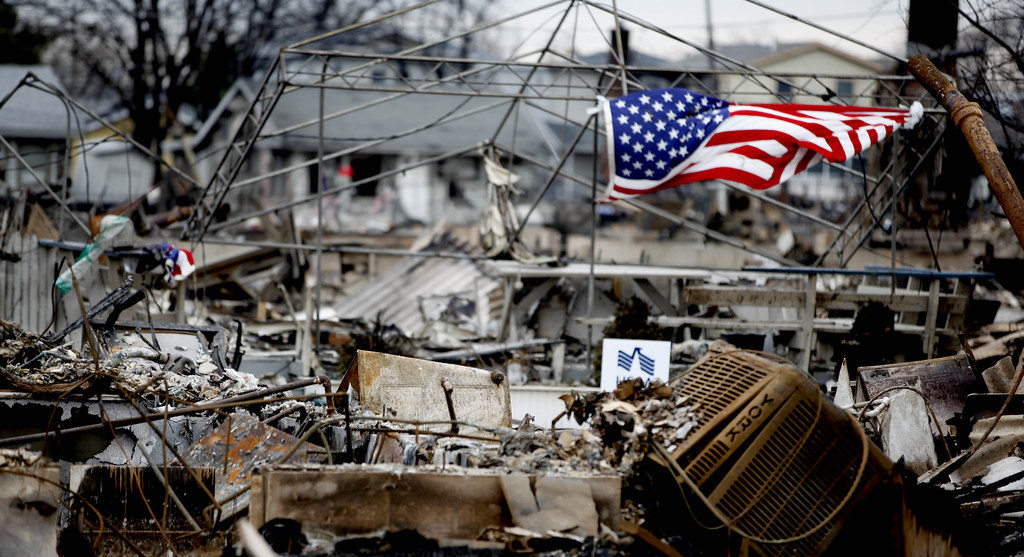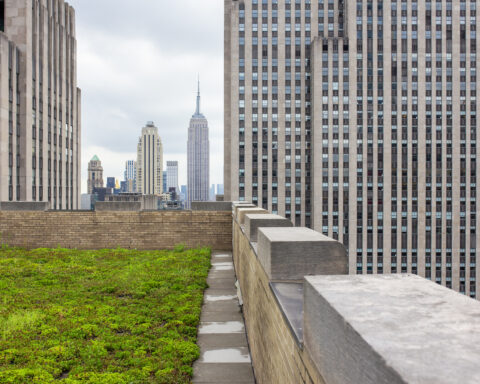New York City (NYC), a bustling metropolis known for its iconic skyline and cultural diversity, faces a unique set of challenges due to its geographical location along the Atlantic coast and its high population density. The city’s vulnerability to rising sea levels in NYC has been a growing concern among policymakers, architects, and environmentalists.
This concern was amplified, especially after the devastating impact of Hurricane Sandy in 2012, which served as a wake-up call for the city’s preparedness against such natural disasters. As a response to the increasing threats posed by rising sea levels in NYC, this article aims to provide an in-depth look into the architectural innovations, barrier systems, and strategic planning that NYC is actively employing to adapt to this existential threat.
The focus will be on how these architectural solutions not only aim to protect the city’s infrastructure but also strive to ensure the safety and well-being of its residents.
The scope of the article
We will explore the historical context, scientific background, and unique vulnerabilities of NYC. The focus will be on architectural innovations, supported by case studies and policy discussions. The article aims to provide a comprehensive view for those interested in architecture, environment, climate change, zoning laws, and barrier systems.

Historical context: The wake-up call of Hurricane Sandy
Hurricane Sandy in 2012 served as a stark reminder of NYC’s vulnerability to rising sea levels. The superstorm caused an estimated $19 billion in damages across the city, affecting homes and businesses in Manhattan, Staten Island, and Queens. The New York Stock Exchange closed for two days, sending economic shockwaves worldwide. The aftermath of Sandy led to increased awareness about flooding and sea level rise, prompting the city to fund projects to address future threats. This event was a pivotal moment that shifted public attention towards the urgent need for climate resilience.
Economic impact of rising sea levels on NYC
The economic repercussions of rising sea levels in NYC are far-reaching. Infrastructure such as transportation systems, power plants, and water treatment facilities are at risk of flooding, which would have a cascading effect on the city’s economy. For instance, the East Side Coastal Resiliency Project, a $1.45 billion initiative set to be completed by 2025, aims to protect over 110,000 people, including those in low-income or public housing. The project involves the construction of floodwalls and floodgates, as well as elevating parts of the region by up to 9 feet to keep storm surges at bay.
The science behind rising sea levels
Understanding the science behind rising sea levels is crucial for grasping the urgency of architectural adaptations in NYC. According to the NYC Panel on Climate Change, sea levels in New York City are expected to rise between 8 inches and 30 inches by the 2050s, and as much as 15 inches to 75 inches by the end of the century. These projections are based on tide gauge and satellite observations, and they vary based on each region’s landscape.
Predictions for the future
The rate of sea level rise has doubled since 1993, when researchers began taking measurements from satellite images. Anthropogenic, or human-caused, climate change has led to about 270 billion tons of ice mass loss in Greenland per year and about 150 billion tons of ice mass loss in Antarctica per year. As a result, rising sea levels in NYC are making storm surges brought on by hurricanes more destructive. The term “1-in-100-year floods” may soon be outdated, as these events are happening more frequently.
NYC’s unique vulnerabilities: Population density and infrastructure at risk
New York City’s geographical location and high population density make it uniquely vulnerable to the impacts of rising sea levels. With nearly half of the state’s residents living in marine counties, the city’s people, resources, and economy are at risk. The city’s extensive network of underground railroads and proximity to other large coastal cities like Jersey City and Hoboken add layers of complexity to its vulnerability. Moreover, there are already over 30,000 properties at risk from frequent tidal flooding in NYC, a number that is expected to increase in the coming years.
Economic considerations: The high cost of rising sea levels in NYC
The state is planning over $4 billion in sea level rise solutions, which include raising roads, fixing drainage, and building seawalls. These projects aim to protect not just the city’s infrastructure but also its economic vitality. New York City alone houses 1 million workers at over 200,000 small businesses. With stronger storm surges brought on by high sea levels, all of New York City’s infrastructure faces serious risk, as major flooding has the ability to not only shut down parts of the city but also cause billions of dollars worth of damage.
Architectural innovations: Barrier systems and elevated structures
New York City is taking proactive steps to combat the challenges posed by rising sea levels. One of the most ambitious projects is a $10 billion coastal resilience initiative aimed at protecting Lower Manhattan from flooding. This project involves extending the Manhattan coastline by up to 500 feet into the East River.
It’s part of the Lower Manhattan Climate Resilience Study, designed in collaboration with climate scientists and local offices. The plan includes a variety of adaptation measures to build resilience against sea level rise, groundwater table rise, tidal inundation, storm surge, extreme rain, and heat waves.
Flood-resilient buildings: The future of architecture in NYC
Another significant architectural innovation is the design of flood-resilient buildings. These structures incorporate features like elevated electrical systems, waterproof materials, and ground floors designed to withstand flooding.
Half a billion dollars will be dedicated to fortifying most of Lower Manhattan with grassy berms in parks and removable barriers that can be anchored in the face of oncoming storms. Along South Street Seaport and the Financial District, the coastline will be pushed out as much as 500 feet, generating new public spaces while raising the outboard edge to meet sea level rises and storm surges.
These architectural innovations are crucial for adapting to rising sea levels in NYC. They not only aim to protect the city’s infrastructure but also strive to ensure the safety and well-being of its residents. In the next section, we will examine specific case studies that highlight the effectiveness of these architectural solutions.
Case study: The “Big U” project and Lower Manhattan Coastal Resilience (LMCR)
The BIG U project is a groundbreaking initiative aimed at fortifying Lower Manhattan against the increasing threats posed by rising sea levels, storm surges, and other climate-related impacts. Developed by the Bjarke Ingels Group in collaboration with various experts, the project is a protective system that encircles the low-lying topography of Manhattan, starting from West 57th Street, going down to The Battery, and then back up to East 42nd Street.
A multi-faceted design
The design of the BIG U is not a one-size-fits-all solution but is tailored to individual neighborhood typologies. It breaks the area into compartments like East River Park, Two Bridges and Chinatown, and Brooklyn Bridge to The Battery. Each compartment serves as a separate flood-protection zone, providing opportunities for integrated social and community planning. For example, the East River Park compartment features a Bridging Berm that not only protects against storm surges but also offers waterfront access for relaxation and socializing.
Technological innovations
The project incorporates deployable walls that can flip down to mitigate flooding, especially in areas like Two Bridges and Chinatown. These walls are attached to the underside of elevated highways and are decorated by neighborhood artists, transforming otherwise menacing areas into safe community destinations. Moreover, the Battery Berm weaves an elevated path with a series of upland knolls, creating unique landscapes and potentially transforming existing buildings into new maritime museums or environmental education facilities.
Financial commitment and implementation
The BIG U project has received an award of $335 million and is implemented by The City of New York and the New York State Battery Park City Authority. The vision that began with the Rebuild by Design Hurricane Sandy Competition has evolved into various funded plans like the East Side Coastal Resiliency (ESCR), Brooklyn Bridge Montgomery Coastal Resilience (BMCR), and Lower Manhattan Coastal Resilience (LMCR). These plans span multiple community boards and are in various stages of implementation.
Future prospects
The BIG U project is more than just a flood barrier; it’s a comprehensive approach to urban resilience. It aims to reduce coastal flood risk through an integrated system of raised parkland, floodwalls, berms, and movable floodgates. The ESCR project, a part of the BIG U, broke ground in Fall 2020 and is expected to be completed by 2026. It features 320 feet of new floodwall and a 79-foot sliding floodgate, among other resilient materials.
By taking a multi-disciplinary approach that combines architectural innovation, community involvement, and robust financial planning, the BIG U project stands as a testament to what can be achieved when a city takes proactive steps to adapt to rising sea levels. It serves as a model not just for New York but for coastal cities around the world facing similar challenges.
Policy and planning: Zoning laws and building codes in NYC
New York City’s approach to rising sea levels is not solely reliant on architectural innovations; it also involves comprehensive policy and planning. One of the key aspects is the revision of zoning laws and building codes to accommodate flood-resilient designs. For instance, the city has moved to flood-proof critical infrastructures like hospitals, power plants, and major tunnels. The Army Corps of Engineers has proposed a $52 billion construction of giant sea gates across New York Harbor, which would involve building 12 movable sea gates across the mouths of major bays and inlets along the harbor.
Public and private partnerships: A collaborative effort
The city has also fostered public and private partnerships to fund and implement these large-scale projects. More than half of the New York City residents in the floodplain zone live in areas with a median income of less than $75,120, making it challenging for many to afford the necessary investments to flood-proof their homes. Public and private partnerships can help bridge this gap, providing the financial resources needed for these critical projects.
Equitable adaptation: Ensuring no one is left behind
Equity is another crucial aspect of the city’s planning. About 1.3 million residents of New York City live within or directly adjacent to the floodplain. As sea levels continue to rise, that number could increase to 2.2 million. Therefore, the city is focusing on equitable adaptation, ensuring that resources are allocated in a manner that protects all residents, regardless of their socio-economic status.
Policy and planning are integral to New York City’s multi-faceted approach to adapting to rising sea levels. These efforts are designed to complement the architectural innovations and provide a comprehensive strategy for resilience. In the next section, we will discuss the challenges and criticisms faced by these initiatives.
Challenges and criticisms: The roadblocks to resilience
While New York City’s efforts to adapt to rising sea levels are commendable, they are not without challenges and criticisms. One of the most controversial aspects has been the temporary closure of public green spaces and the removal of mature trees to make way for construction projects.
For instance, the East Side Coastal Resiliency Project led to the temporary blocking of 45 acres of public green space and the cutting down of 1,000 mature trees. This has fueled protests from residents demanding “true resiliency” and the preservation of East River Park.
Financial constraints and equity concerns
Another challenge is the financial aspect. Projects like the East Side Coastal Resiliency cost billions, and there is a constant struggle to secure adequate funding. Moreover, there are equity concerns, as more than a quarter of the 110,000 people impacted by this project live in low-income or public housing. Critics argue that the city’s approach may not be as inclusive as it should be, leaving vulnerable communities at risk.
The uncertainty of climate change
The unpredictability of climate change adds another layer of complexity. While the city is preparing for a sea-level rise of up to a foot by 2050, according to the latest National Oceanic and Atmospheric Administration report, these projections could change. The risks double by 2100, with an estimated increase of 2 feet of sea level, leading to more frequent and intense coastal flooding.
Despite these challenges and criticisms, New York City continues to push forward with its multi-faceted approach to adapt to rising sea levels. The next section will discuss the future outlook and the steps that need to be taken to ensure long-term resilience.
Future outlook and next steps: Navigating an uncertain landscape
As New York City continues its efforts to adapt to rising sea levels, the future remains uncertain but not without direction. The sea level around Battery Park has risen by nearly 9 inches since 1950, and it’s now rising by 1 inch every 7-8 years. This acceleration is expected to continue, with forecasts suggesting that the sea level will rise by another 6 inches in just the next 14 years. Given these projections, the city is planning over $4 billion in sea level rise solutions, which include raising roads, fixing drainage, and building seawalls.
Individual and community actions: What can you do?
While large-scale projects are essential, individual and community actions also play a crucial role. Homeowners can take steps to flood-proof their properties, and community organizations can advocate for equitable adaptation strategies. New York City has a $3.7 billion plan to deal with sea level rise and flooding, but towns in Nassau and Suffolk County are also planning for hundreds of millions in projects, from seawalls to raised roads to drainage systems.
Long-term resilience: A multi-level approach
For long-term resilience, New York will need solutions at the individual, local, state, and federal levels. The city alone houses 1 million workers at over 200,000 small businesses, and stronger storm surges brought on by high sea levels pose a serious risk to New York City’s infrastructure. Therefore, a multi-level approach that involves various stakeholders is imperative for the city’s future resilience against rising sea levels.
As we navigate this uncertain landscape, it’s clear that adapting to rising sea levels in NYC requires a multi-faceted approach that combines architectural innovations, policy changes, and community involvement. The challenges are many, but so are the opportunities for creating a more resilient and sustainable future.
Conclusion and recommendations: A path forward
New York City’s journey to adapt to rising sea levels is a complex and ongoing endeavor. The city’s unique geographical features, such as its extensive waterfront and multiple islands, make it particularly vulnerable to the impacts of climate change. While significant strides have been made in architectural innovations and policy changes, challenges remain. Financial constraints, equity concerns, and the unpredictability of climate change are roadblocks that need to be addressed.
A multi-faceted approach
A single solution will not suffice in protecting the city from the threats posed by rising sea levels. A multi-faceted approach that includes architectural innovations, policy changes, and community involvement is essential. Projects like The Big U are crucial, but so are smaller-scale initiatives that can be implemented at the community level.
Equity and environmental justice
Any plan to combat rising sea levels must prioritize the needs of all New Yorkers, especially those in vulnerable communities. Equity and environmental justice should be at the forefront of all planning and implementation processes.
Future research and development
Continued research and development are crucial for staying ahead of the challenges posed by rising sea levels. This includes not only architectural and engineering solutions but also studies on the social and economic impacts of these changes.
In conclusion, adapting to rising sea levels in NYC is a monumental task that requires the concerted efforts of various stakeholders. While challenges are aplenty, the city has the opportunity to set a global example in how to effectively and equitably adapt to this looming crisis.







